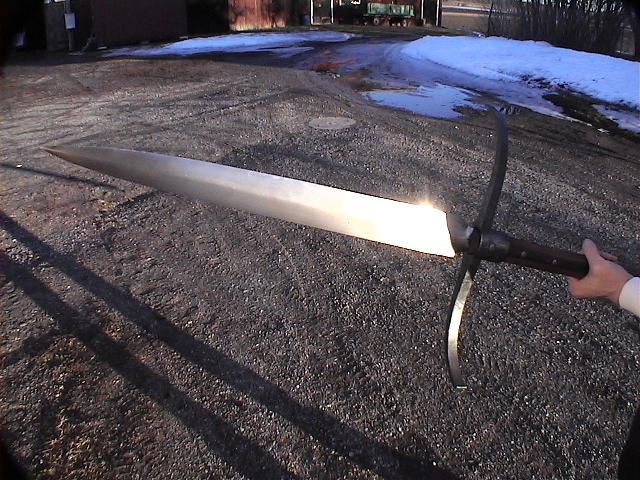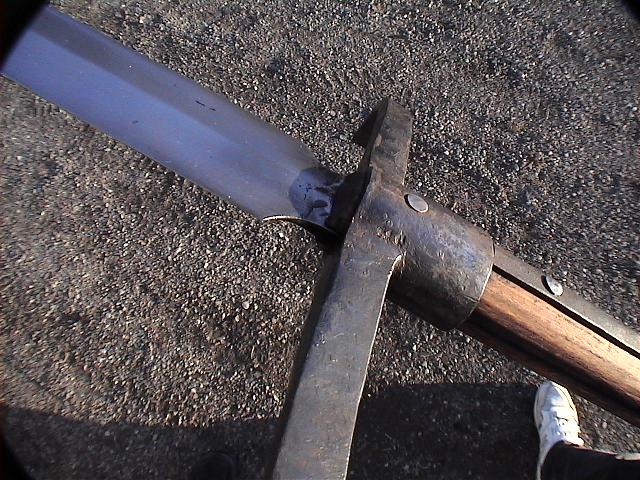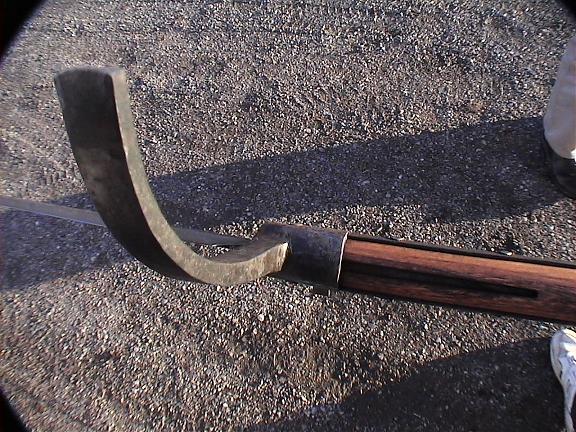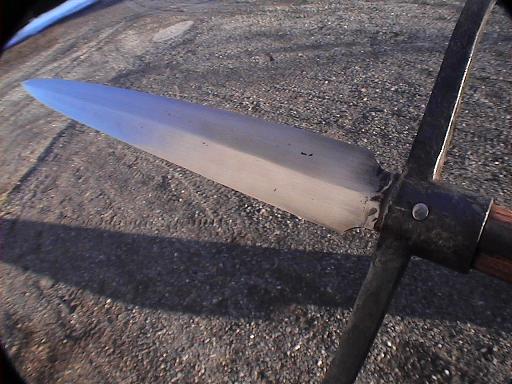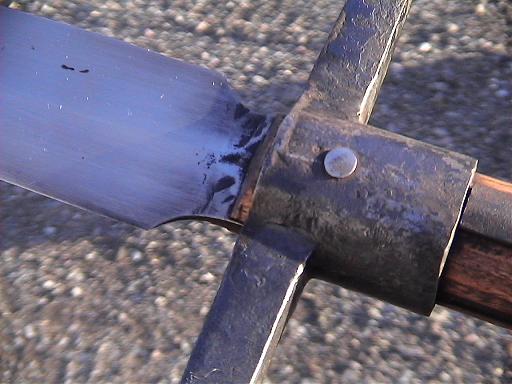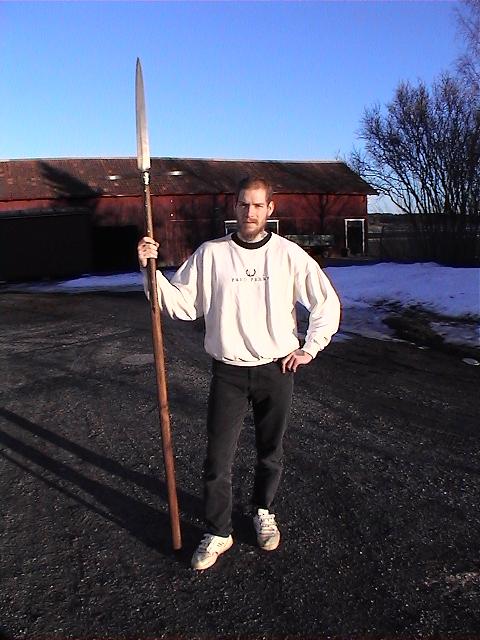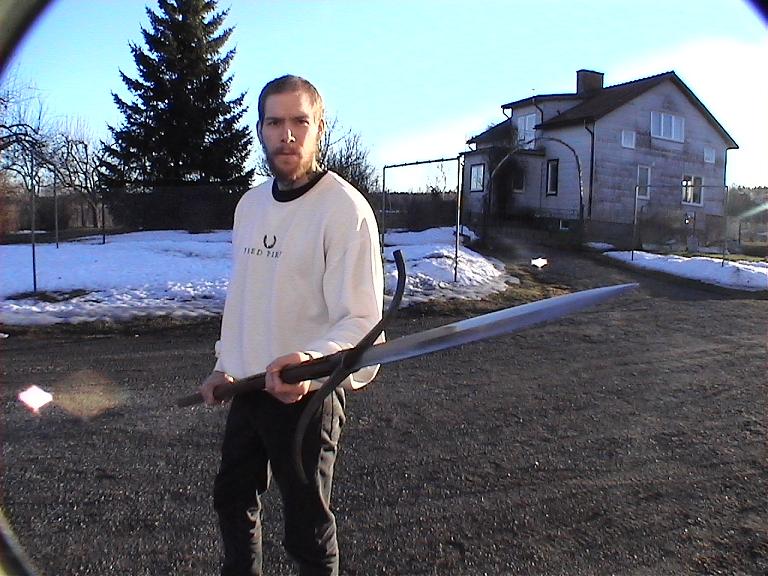-Landsknecht Paul Dolnstein, 1502.
The ”hafted sword/staffsword” is a peasant-weapon of –as far as I know- purely Swedish origin, from the late15th /early 16th Century. The German Landsknecht Paul Dolnstein who, serving under the Danish King Hans partook in the attack of Älvsborg in 1502 where he fought against Swedish peasant armies. In his diary he noted that the Swedish peasants carried ”good spears made from swords”. Although some historical staffswords might have been made from sword-blades that had been remade to fit a haft, later archaeological finds, among them an earthfind from Husaby Biskopsgård have shown that the weapon in fact was a purposely made to look the way it looked and to fill the role of being carried by massed (peasant) infantry. Looking at Olaus Magnus’ “History of the Nordic Peoples” from 1555 where he writes that: “...excellent steel is found in the North in such abundance, that it to the fullest fulfills the need for natives’ as well as foreigners’ whole need of cuirasses, helmets, swords and spears” –one quickly realizes that the common people of 16th Century Sweden certainly had the means to produce such a weapon indeed. The staffswords roughly measured some 98 inches (ca 2,5m) in length and carried a swordshaped blade that in some examples measured roughly 19 inches in length (although they could be longer). Just below the blade the weapon carried a either straight or s-shaped cross which could measure up to almost 20 inches; greatly enhancing the weapon’s sword-like appearance.
Peter Johnsson’s reconstruction is based on historical originals he has studied and he has certainly managed to create a very impressive weapon. It’s a piece of weaponry that lies well in the hands and the quite hefty cross- and blade-part is counterbalanced by the massive, sturdy haft. The blade is quite broad and also quite long, and very much resembles a short sword. It’s readily fastened to the haft by the means of a long tang. The gently, curved s-shaped crossguard is very sturdy and made of wrought iron metalwork The general appearance of the cross gives the impression that it would work very well to ward off incoming staff-weapons and pole-arms, such as halberds and whatnot with the cross itself. And when used in a tightly packed line of infantry –as shown in Paul Dolnstein’s drawings, the cross would give an even greater defensive advantage against enemy pole-arms. Another very fine use the cross can be out to, is hooking and trapping an opponents arms, legs and neck. Below the cross two thick languets run down the course of the haft. These would support and strengthen the whole weapon as well as keep it from being chopped off by a halberd or similar weapon. The great length of the haft allows for quick thrusts and perhaps even sweeping cuts when held near the butt end. If gripped nearer the cross, like when the battle was well and truly joined and the close in-fighting had begun, the weapon becomes very quick indeed and allows for vicious thrust, pressing slices and short cuts and stabs. The sum of its parts points to the fact that this is a weapon of good offensive as well as defensive capabilities –something that would be perfectly suited to be wielded by the peasants who perhaps sometimes, but certainly not always, lacked the training of the normal soldier.
Peter’s reconstruction is well balanced, sharp, pointy and very lovely indeed. It’s in fact one of my absolutely favorite pieces in my collection. What I particularly like and appreciate with the specimen I bought from Peter is that he has intentionally made the surface of the blade quite rough and somewhat uneven. And it’s not minutely polished. And this, along with the rough metalwork of the cross and languets gives the weapon a very rustic feel that I like. It evokes images of the village smith hammering out blades so that the peasants could arm with weapons such as this one themselves and go off to war.
Total length: 93 inches (236cm)
Blade length: 21 9/16 inches (ca 55cm)
Blade width at widest point: 2 3/16 inches (5,3cm)
Tang length: 6 8/16 inches (16,5cm)
Cross length: 15 3/16 inches (39,5cm)
Languet length: 22 6/16 inches (57cm)
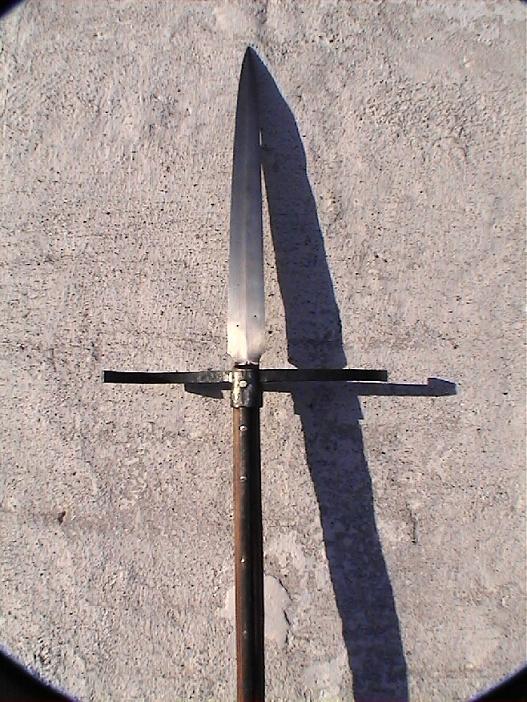
A somewhat closer look.

The reconstructed Peter Johnsson staffsword in all its glory.
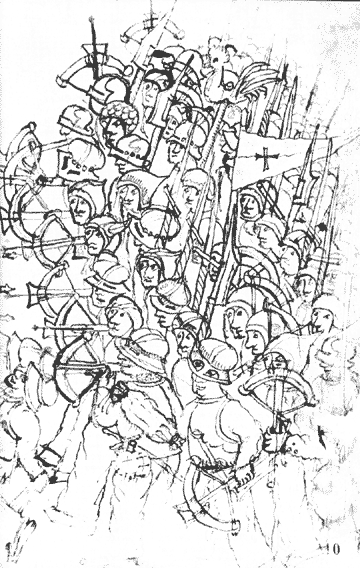
Image (ca 1502) from paul Dolnstein's diary showing a formation of Swedish peasant-soldiers carrying staffswords.

Image (ca 1502) from Paul Dolnstein's diary showing a German landsknecht facing off against a Swedish peasant-soldier wielding a staffsword.
